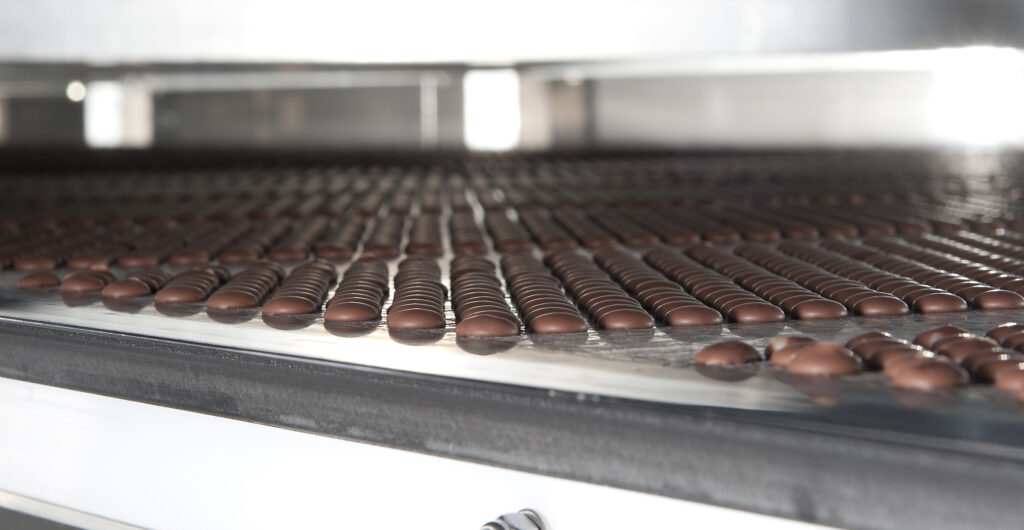Chocolate couverture knowledge
Chocolate in its finest form
Chocolate couverture or chocolate coating consists of cocoa mass, sugar, cocoa butter and usually lecithin. The term “couverture” (from the French couvrir, i.e. to cover, to coat) means that it is primarily suitable for coating, for example pralines. A chocolate couverture has the distinguishing feature that it is thinner during processing due to its higher cocoa butter content; it is also perceived as crunchier than conventional chocolates when solid.
The requirements for cacao and chocolate products were laid down EU-wide in Directive 2000/36/EG, implemented in German national law through the Cocoa Ordinance. The Cocoa Ordinance includes specifications of the conditions under which a product may be called chocolate, chocolate couverture, milk chocolate or white chocolate, for example, and lays down the minimum requirements for the ingredients that give said products their name and value. The designation that may be used for the respective products is therefore essentially dependent on the cocoa solids, milk solid, milk fat and cocoa butter content. For example, a chocolate couverture must contain at least 35% total cocoa solids, at least 2.5% non-fat cocoa solids and at least 31% cocoa butter. If a chocolate couverture is to be given the quality designation “dark ”, the proportion of total cocoa solids must be at least 47%, the proportion of non-fat cocoa solids 16% and the proportion of cocoa butter at least 31%.
The use of the term “milk chocolate ” requires a total cocoa solids content of at least 30%, a non-fat cocoa solids content of at least 2.5%, a milk solids content of 18%, a milk fat content of at least 4.5% and a total fat content of at least 25%.
White chocolate does not contain cocoa mass, but the use of the designation requires that the proportion of cocoa butter is at least 20%, that of milk fat is at least 3.5% and of milk solids at least 14%.
The recipe proportions are an essential element for the flavour, melt-in-the-mouth texture and crunch. The high quality of our chocolate couvertures is achieved through the careful selection of suitable cacao varieties, the basic refining processes such as intensive fine rolling and the correct amount of conching of the chocolate masses.

Composition of couverture
using the example of the dark chocolate couverture Fehmarn 727 (60/40/39):
Cocoa content
This is the total cocoa content of the chocolate couverture
Sugar
This is how much sugar is in chocolate couverture
Cocoa butter
Percentage of cocoa butter
Cocoa solids
Proportion of fat-free cocoa solids
